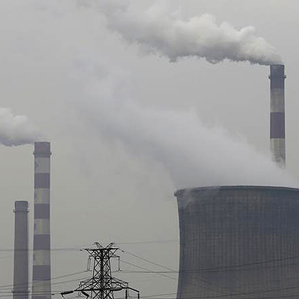Renewables Can’t Keep Up with the Growth in Coal Use Worldwide
Despite remarkable growth, solar and wind power aren’t making a dent in carbon emissions, says a new report from the International Energy Agency. Coal consumption is growing too fast to offset any gains from renewables.

According to the report, solar power capacity increased by 42 percent, and wind increased 19 percent during 2012. In comparison, coal only grew by 6 percent over the last two years. But because the total installed capacity of coal power was already huge, the amount of coal capacity added was much larger than that of solar and wind power. Even the increase in natural gas consumption hasn’t decreased the use of coal worldwide (see “Coal Demand Falls in the U.S., Rises Everywhere Else”).
Renewable energy can’t keep up with coal, let alone decrease its use. From 2001 to 2010, the amount of electricity generated with coal increased by 2,700 terawatt hours. Over the same period, electricity from non-fossil sources—including wind, solar, biomass, hydropower, and nuclear—increased by less than half that amount: or 1,300 terawatt hours.
Worldwide, more coal power is being installed because it’s inexpensive, reliable, and easy to incorporate into the grid. Before countries decide to stop building new coal plants, wind and solar and other low-carbon alternatives need to get cheaper, says Matthew Stepp, a senior analyst at the Information Technology and Innovation Foundation.
“In 2011, the last year data has been published, China built as many coal plants as there are in Texas and Ohio combined, even as it led the world in wind deployment,” says Stepp. “Even China, with its seemingly endless government budgets is still implementing fossil fuels because it’s cheap and high-performing.”
“The situation is actually worse than the IEA portrays,” adds David Victor, co-director of the Laboratory on International Law and Regulation at the University of California at San Diego. Data from the agency shows that the world actually emits more carbon per unit of energy than it did a decade ago because of the growth in coal, he says.
The lack of progress on developing and implementing technology for capturing carbon dioxide from power plants is also noteworthy, Victor says. “This is a good case study because a decade ago there were high hopes for [carbon capture and sequestration (CCS)], but in the last decade basically nowhere on the planet has there emerged a viable business model for electric power CCS,” he says.
The IEA report says that while funding should be tripled to provide the kind of technology needed to replace fossil fuels, the actual share of spending on energy R&D is going down. It also calls for a reduction in subsidies for fossil fuels, which at $523 billion are six times higher than subsidies for renewable energy.
Keep Reading
Most Popular
Large language models can do jaw-dropping things. But nobody knows exactly why.
And that's a problem. Figuring it out is one of the biggest scientific puzzles of our time and a crucial step towards controlling more powerful future models.
How scientists traced a mysterious covid case back to six toilets
When wastewater surveillance turns into a hunt for a single infected individual, the ethics get tricky.
The problem with plug-in hybrids? Their drivers.
Plug-in hybrids are often sold as a transition to EVs, but new data from Europe shows we’re still underestimating the emissions they produce.
Google DeepMind’s new generative model makes Super Mario–like games from scratch
Genie learns how to control games by watching hours and hours of video. It could help train next-gen robots too.
Stay connected
Get the latest updates from
MIT Technology Review
Discover special offers, top stories, upcoming events, and more.